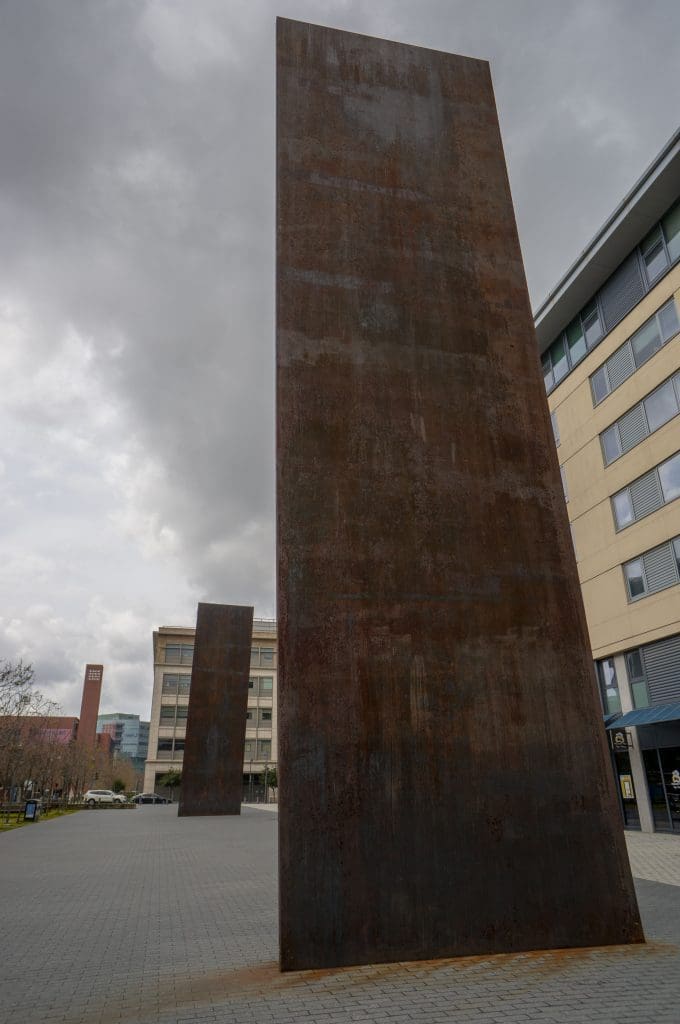Ones of life’s pleasures is staring at something interesting, especially if it is also beautiful. And so I am bereft now that the museums and galleries are all closed. In response to shelter-in place, many museums are enhancing their virtual experiences. But I’ve yet to explore any of these offerings because the internet is full of horrors, and I feel the need to spend my leisure time away from my screen.
I’m lucky to live near the UCSF Mission Bay Campus, which houses many works of outdoor art, including Richard Serra’s Ballast (2005). This piece has never felt more timely. It consists of two giant rusting steel plates placed at opposite ends of the plaza. It’s the topological essence of social distancing. Each plate is fifty-feet tall and tilts at an angle away from the other, resembling the dance many of us are doing as we try to respect the newly expanded boundaries of personal space.
On the day I visited, two young women were conversing at the base of the eastern plate. The conversation was casual, but necessarily loud considering the sensible gap between them. It concluded with one shouting “Virtual Hug!” at the other. Each leaned in slightly, tilting in opposition, replicating the sculpture in miniature.
On the base of the western plate, there were stick figures drawn in pastel chalk by a childish hand. Someone’s idea of homeschooling, and the perfect thing to complain about on Nextdoor. I imagine the young vandal was grateful to be outdoors and logged out of Zoom. As for their guardian, I assume they were one of those Bay Trail joggers who don’t seem to care if the rest of us live or die.
The red-brown of the rusting exterior looks best on a foggy day. Serra is a San Francisco native and the work seems to understand something particular about the climate. It was a sad day when his giant installation Sequence left SFMOMA in 2018 after spending more than two years stationed at the Howard Street entrance. Sequence was an embrace, a set of parallel plates that formed a hallway for the viewer to walk through. The path twisted into a near-infinity symbol. It was about intimacy; you walked around it while being inside it. As a result, you often bumped into viewers coming in from the other end, producing a kind of closeness that is now a distant memory.
Ballast offers no direction, but I recommend taking a similar curving path around it. You can’t lose yourself in it, like you could in Sequence, but that’s okay. The time we are in requires vigilance when we are out in public spaces. It is a new way of telling each other we care. We stand apart from one another. And we tilt away.
Dominica Phetteplace is a writer and futurist. Her honors include a MacDowell Fellowship, a Pushcart Prize and a Rona Jaffe Award. You can read her story “The Story of a True Artist” in Issue 105.

